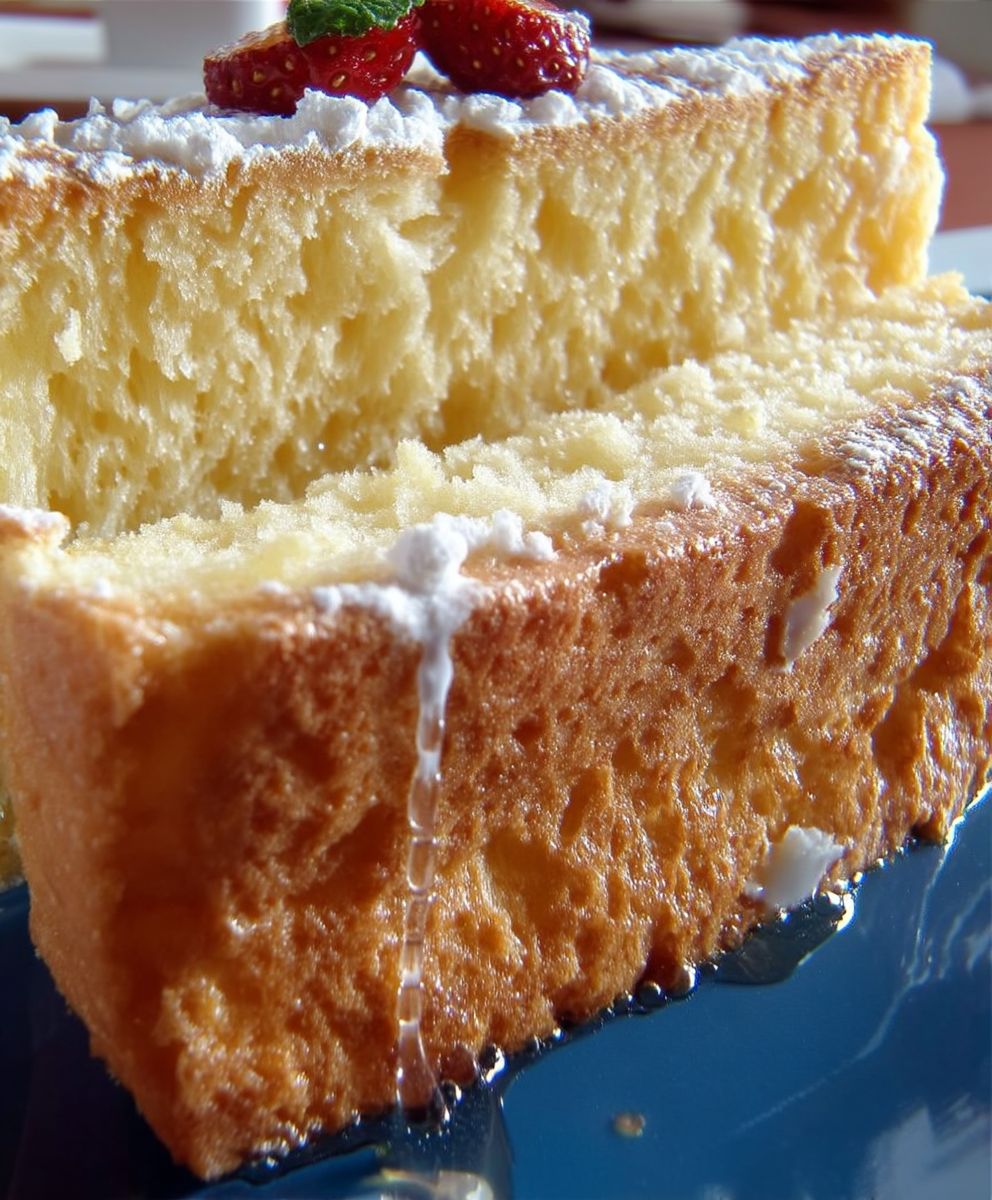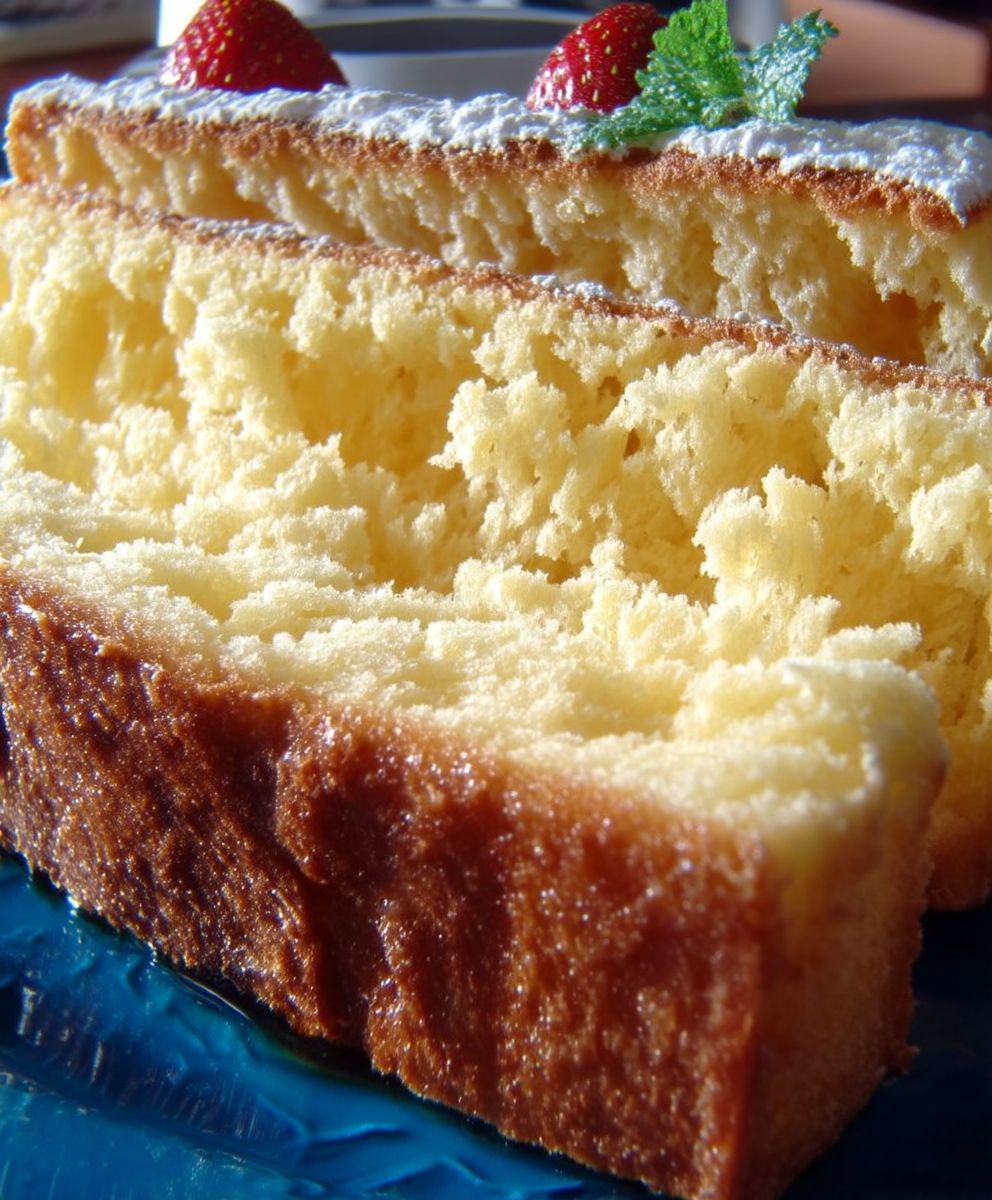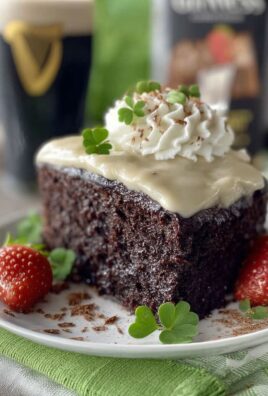Simple Sponge Cake: the very words evoke images of tea parties, delicate pastries, and a comforting sweetness that transcends generations. Have you ever craved a dessert that’s both elegant and utterly approachable? A cake that whispers of homemade goodness without demanding hours in the kitchen? Then look no further! This recipe for a simple sponge cake is your gateway to baking bliss.
The sponge cake boasts a history as light and airy as its texture. Originating centuries ago, it was a testament to culinary ingenuity, relying on whipped eggs for its signature lift rather than chemical leaveners. It quickly became a staple in European baking traditions, evolving into countless variations, each reflecting the unique flavors of its region. Think of the classic Victoria sponge, layered with jam and cream, or the genoise, a cornerstone of many French pastries.
But what is it about this unassuming cake that has captured hearts (and taste buds) for so long? It’s the perfect balance of simplicity and versatility. Its delicate crumb melts in your mouth, offering a subtle sweetness that’s never overpowering. It’s a blank canvas, ready to be adorned with fresh berries, whipped cream, chocolate ganache, or simply a dusting of powdered sugar. And perhaps most importantly, it’s incredibly easy to make! So, let’s embark on this baking adventure together, and create a simple sponge cake that will impress your friends and family, and become a cherished recipe in your own collection.
Ingredients:
- 225g (8oz) self-raising flour, sifted
- 225g (8oz) caster sugar
- 225g (8oz) softened unsalted butter, plus extra for greasing
- 4 large eggs
- 2 tablespoons milk
- 1 teaspoon vanilla extract
- Pinch of salt
- Optional: Icing sugar, for dusting
- Optional: Jam and whipped cream, for filling
Preparing the Cake Batter
- Preheat your oven to 180°C (350°F/Gas Mark 4). This is crucial for even baking. Make sure your oven is properly preheated before you even think about putting the cake in!
- Prepare your cake tins. Grease two 20cm (8 inch) round cake tins with butter. Be generous! You don’t want your cake sticking. After greasing, lightly dust the tins with flour, tapping out any excess. This will help the cakes release cleanly. You can also line the base of each tin with a circle of baking parchment for extra insurance.
- Cream together the butter and sugar. In a large mixing bowl, combine the softened butter and caster sugar. Use an electric mixer (handheld or stand mixer) to cream them together until the mixture is light and fluffy. This usually takes about 5-7 minutes. The mixture should become noticeably paler and increase in volume. Don’t rush this step; it’s essential for a light and airy cake. Scrape down the sides of the bowl occasionally to ensure everything is evenly mixed.
- Beat in the eggs, one at a time. Add the eggs one at a time, beating well after each addition. If the mixture starts to curdle (look separated), add a tablespoon of the flour. This will help to bring it back together. Make sure each egg is fully incorporated before adding the next.
- Add the vanilla extract. Stir in the vanilla extract. This adds a lovely flavour to the cake.
- Gently fold in the flour. Sift the self-raising flour into the bowl. Gently fold it into the wet ingredients using a large metal spoon or spatula. Be careful not to overmix, as this can develop the gluten in the flour and result in a tough cake. Fold until just combined; a few streaks of flour are okay. Overmixing is a common mistake, so be gentle!
- Add the milk. Add the milk and gently fold it in until the batter is smooth and evenly combined. The milk helps to loosen the batter and create a moist cake.
Baking the Sponge Cakes
- Divide the batter between the prepared tins. Divide the cake batter evenly between the two prepared cake tins. Use a scale to ensure they are as even as possible for uniform baking.
- Smooth the surface of the batter. Use a spatula or the back of a spoon to smooth the surface of the batter in each tin. This will help the cakes bake evenly.
- Bake in the preheated oven. Bake in the preheated oven for 25-30 minutes, or until the cakes are golden brown and a skewer inserted into the center comes out clean. The baking time may vary depending on your oven, so keep an eye on them.
- Check for doneness. To check if the cakes are done, insert a wooden skewer or toothpick into the center of one of the cakes. If it comes out clean, the cakes are ready. If it comes out with wet batter on it, bake for a few more minutes and check again.
- Cool the cakes in the tins. Once the cakes are baked, remove them from the oven and let them cool in the tins for about 10 minutes. This allows them to firm up slightly before you try to remove them.
- Turn the cakes out onto a wire rack. After 10 minutes, carefully turn the cakes out onto a wire rack to cool completely. Make sure the wire rack is clean.
Assembling the Sponge Cake
- Prepare your filling (optional). While the cakes are cooling, prepare your filling. You can use jam, whipped cream, buttercream, or any other filling you like. If using jam, warm it slightly in a saucepan or microwave to make it easier to spread. If using whipped cream, make sure it’s well chilled.
- Level the cakes (optional). Once the cakes are completely cool, you can level them if necessary. Use a serrated knife to trim off any domed tops, creating a flat surface. This will make the assembled cake more stable.
- Spread the filling on one cake layer. Place one of the cake layers on a serving plate or cake stand. Spread the filling evenly over the top of the cake. Be generous with the filling!
- Top with the second cake layer. Carefully place the second cake layer on top of the filling.
- Dust with icing sugar (optional). If desired, dust the top of the cake with icing sugar. This adds a touch of sweetness and makes the cake look more elegant. You can use a sieve or a small tea strainer to dust the icing sugar evenly.
- Serve and enjoy! Slice the cake and serve immediately. Sponge cake is best enjoyed fresh, but it can be stored in an airtight container at room temperature for up to 2 days.
Tips for Success
- Use room temperature ingredients. Using room temperature ingredients, especially the butter and eggs, helps them to emulsify properly, resulting in a smoother batter and a more even texture in the cake.
- Don’t overmix the batter. Overmixing develops the gluten in the flour, which can make the cake tough. Mix until just combined.
- Measure accurately. Accurate measurements are essential for baking success. Use a kitchen scale for the most accurate results.
- Preheat your oven properly. A preheated oven ensures that the cake bakes evenly.
- Cool the cakes completely before frosting. Frosting a warm cake can cause the frosting to melt and slide off.
- Store the cake properly. Store the cake in an airtight container at room temperature to prevent it from drying out.
- Experiment with flavors. You can add different extracts, spices, or citrus zest to the batter to customize the flavor of the cake.
- Use good quality ingredients. The quality of your ingredients will affect the taste and texture of the cake. Use good quality butter, eggs, and flour.
- Grease and flour your cake tins properly. This will prevent the cakes from sticking to the tins.
- Don’t open the oven door too often. Opening the oven door can cause the oven temperature to drop, which can affect the baking time and the texture of the cake.
Variations
- Chocolate Sponge Cake: Add 2 tablespoons of cocoa powder to the dry ingredients.
- Lemon Sponge Cake: Add the zest of one lemon to the batter.
- Orange Sponge Cake: Add the zest of one orange to the batter.
- Coffee Sponge Cake: Add 1 tablespoon of instant coffee granules dissolved in 1 tablespoon of hot water to the batter.
- Spice Sponge Cake: Add 1 teaspoon of mixed spice to the dry ingredients.
- Filled Sponge Cake: Fill the cake with jam, whipped cream, buttercream, or any other filling you like.
- Frosted Sponge Cake: Frost the cake with buttercream, ganache, or any other frosting you like.
Troubleshooting
- Cake is dry: Overbaking is the most common cause of a dry cake. Make sure you are not baking the cake for too long. You can also try adding more moisture to the batter by adding a tablespoon or two of milk or yogurt.
- Cake is dense: Overmixing the batter can result in a dense cake. Be careful not to overmix the batter. You can also try using a lighter flour, such as cake flour.
- Cake is sunken in the middle: This can be caused by a number of factors, including using too much liquid, not baking the cake long enough, or opening the oven door too often. Make sure you are following the recipe carefully and that your oven is properly preheated.
- Cake is sticking to the tin: Make sure you are greasing and flouring the cake tins properly. You can also line the base of the tins with baking parchment.
- Cake is cracking on top: This is usually caused by the oven being too hot. Try reducing the oven temperature by 10-20 degrees.

Conclusion:
This isn’t just another cake recipe; it’s an invitation to create a little bit of sunshine in your kitchen. This simple sponge cake is a must-try because of its incredible versatility, its ease of preparation, and the sheer joy it brings with every bite. It’s the kind of recipe you’ll find yourself reaching for time and time again, whether you’re a seasoned baker or just starting out. The light, airy texture and delicate flavor make it the perfect blank canvas for all sorts of delicious adventures.
But what truly sets this recipe apart is its adaptability. Its a foundation upon which you can build countless desserts. Feeling fruity? Add a layer of fresh berries and a dollop of whipped cream for a classic summer treat. Want something a little more decadent? Split the cake in half and fill it with a rich chocolate ganache or a creamy pastry cream. A simple dusting of powdered sugar is elegant enough for a tea party, while a generous slathering of buttercream frosting transforms it into a celebratory masterpiece.
Serving Suggestions and Variations:
* Berry Bliss: Top with mixed berries (strawberries, blueberries, raspberries) and a light dusting of powdered sugar. A dollop of whipped cream or a scoop of vanilla ice cream elevates it further.
* Chocolate Indulgence: Split the cake and fill with chocolate ganache or Nutella. Dust the top with cocoa powder or drizzle with melted chocolate.
* Lemon Zest Delight: Add lemon zest to the batter for a bright, citrusy flavor. A lemon glaze made with powdered sugar and lemon juice is the perfect finishing touch.
* Coffee Cake Twist: Brush the baked cake with coffee liqueur and dust with cocoa powder for a sophisticated, grown-up treat.
* Mini Sponge Cakes: Bake the batter in muffin tins for individual sponge cakes. These are perfect for lunchboxes or afternoon snacks.
* Trifle Base: Cut the sponge cake into cubes and use it as the base for a delicious trifle, layered with fruit, custard, and whipped cream.
* Jam-Filled Goodness: Spread your favorite jam between two layers of the sponge cake for a simple yet satisfying treat.
I truly believe that everyone should have a reliable sponge cake recipe in their repertoire, and this one is as foolproof as it gets. It’s the perfect base for countless desserts, and it’s simple enough to whip up on a whim. The aroma alone, as it bakes, is enough to brighten any day.
So, I wholeheartedly encourage you to give this recipe a try. Don’t be intimidated by baking; this simple sponge cake is incredibly forgiving. Follow the instructions, trust your instincts, and most importantly, have fun! I’m confident that you’ll be delighted with the results.
And once you’ve created your own masterpiece, I’d absolutely love to hear about it! Share your photos, your variations, and your experiences in the comments below. Let me know what toppings you used, what fillings you tried, and how you made this recipe your own. I can’t wait to see what delicious creations you come up with! Happy baking!
Simple Sponge Cake: The Ultimate Guide to Baking Perfection
A classic and easy-to-make sponge cake, perfect for afternoon tea or a simple dessert. Enjoy it plain, dusted with icing sugar, or filled with your favorite jam and whipped cream.
Ingredients
- 225g (8oz) self-raising flour, sifted
- 225g (8oz) caster sugar
- 225g (8oz) softened unsalted butter, plus extra for greasing
- 4 large eggs
- 2 tablespoons milk
- 1 teaspoon vanilla extract
- Pinch of salt
- Optional: Icing sugar, for dusting
- Optional: Jam and whipped cream, for filling
Instructions
- Preheat your oven to 350°F (180°C/Gas Mark 4). Grease and flour two 8-inch (20cm) round cake tins. You can also line the base with baking parchment.
- In a large bowl, cream together the softened butter and caster sugar using an electric mixer until light and fluffy (5-7 minutes). Scrape down the sides of the bowl as needed.
- Beat in the eggs one at a time, mixing well after each addition. If the mixture curdles, add a tablespoon of flour.
- Stir in the vanilla extract.
- Sift the self-raising flour into the bowl. Gently fold it into the wet ingredients until just combined. Be careful not to overmix.
- Add the milk and gently fold it in until the batter is smooth and evenly combined.
- Divide the batter evenly between the prepared cake tins. Smooth the surface of the batter in each tin.
- Bake in the preheated oven for 25-30 minutes, or until the cakes are golden brown and a skewer inserted into the center comes out clean.
- Remove from the oven and let the cakes cool in the tins for 10 minutes.
- Turn the cakes out onto a wire rack to cool completely.
- While the cakes are cooling, prepare your filling (jam, whipped cream, buttercream, etc.). Warm jam slightly for easier spreading.
- Once cooled, level the cakes with a serrated knife if desired.
- Place one cake layer on a serving plate and spread with filling. Top with the second cake layer.
- Dust the top of the cake with icing sugar.
- Slice and serve immediately. Store in an airtight container at room temperature for up to 2 days.
Notes
- Use room temperature ingredients for best results.
- Don’t overmix the batter.
- Measure ingredients accurately.
- Preheat your oven properly.
- Cool the cakes completely before frosting.
- Store the cake in an airtight container.
- Experiment with flavors by adding extracts, spices, or citrus zest.
- Use good quality ingredients.
- Grease and flour your cake tins properly.
- Don’t open the oven door too often.






Leave a Comment